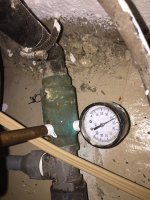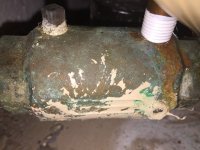I'm a fairly handy person, but don't have much experience with wells. My pump is deep in the ground. I assume the check valve is near the pump? I do not visibly see any check valve from my line coming into the house to the pressure tank. If its the pitless adapter, is that something I would tpyically see? I haven't opened the well cap yet.
Separately, I did just drain the pressure tank, and checked the pressure. and its holding steady at 39. My switch is a 40-60. Like I said, I very slowly loose pressure without water running. It maybe takes between 5 and 10 minutes before I lose pressure and the pump turns on again.



